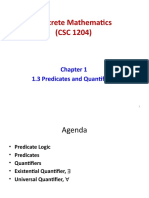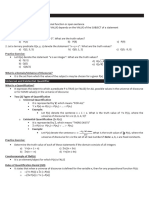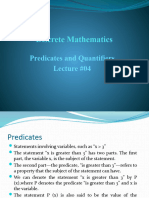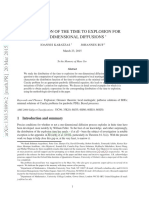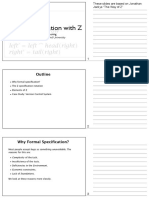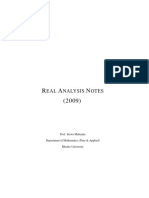0% found this document useful (0 votes)
15 views71 pages1.4 Predicates and Quantifiers
The document provides an overview of predicates and quantifiers in logic, defining propositions, boolean variables, and propositional functions. It explains universal and existential quantification, detailing how they are used to create propositions from predicates based on the universe of discourse. Additionally, it discusses the truth values of quantified statements and introduces the uniqueness quantifier.
Uploaded by
rubab.anamCopyright
© © All Rights Reserved
We take content rights seriously. If you suspect this is your content, claim it here.
Available Formats
Download as PDF, TXT or read online on Scribd
0% found this document useful (0 votes)
15 views71 pages1.4 Predicates and Quantifiers
The document provides an overview of predicates and quantifiers in logic, defining propositions, boolean variables, and propositional functions. It explains universal and existential quantification, detailing how they are used to create propositions from predicates based on the universe of discourse. Additionally, it discusses the truth values of quantified statements and introduces the uniqueness quantifier.
Uploaded by
rubab.anamCopyright
© © All Rights Reserved
We take content rights seriously. If you suspect this is your content, claim it here.
Available Formats
Download as PDF, TXT or read online on Scribd
/ 71





